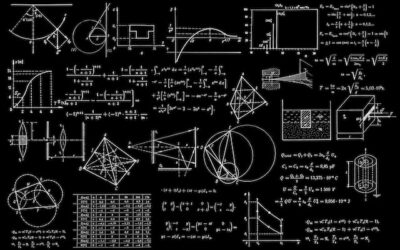As a professional in the field of mathematics and statistics, I am often asked to explain the concept of probability theory and random variables. Probability theory is a branch of mathematics that deals with the analysis of random phenomena, while random variables are used to represent the outcomes of these phenomena. Understanding these concepts is essential in many fields, including finance, engineering, and science. In this comprehensive guide, I will explain what random variables are, the types of random variables, probability distributions, their importance in probability theory, and how to calculate probability distribution formulas.
What is a random variable and how is it used in probability theory?
A random variable is a mathematical function that assigns a numerical value to each possible outcome of a Random Event. Random variables are used in probability theory to represent the outcomes of these random events. They can be discrete, meaning they take on a finite or countably infinite number of values, or continuous, meaning they take on any value within a certain range.
For example, if we are flipping a fair coin, the random variable X can be defined as the number of heads that appear in a sequence of ten flips. X can take on any value between 0 and 10, inclusive. In this case, X is a discrete random variable because it takes on a finite number of values.
Random variables are used to model many different types of random phenomena, including the outcomes of games of chance, the number of defects in a manufacturing process, and the time between arrivals of customers at a store.
Types of random variables – Discrete and Continuous
As mentioned earlier, random variables can be Discrete or Continuous.
Discrete random variables take on a finite or countably infinite number of values, while continuous random variables take on any value within a certain range.
Discrete random variables are used to model events that have a finite or countably infinite number of outcomes, such as flipping a coin or rolling a die. Continuous random variables are used to model events that have an infinite number of possible outcomes, such as the height of a person or the time it takes for a car to travel a certain distance.
Probability distributions and their importance in probability theory
A probability distribution is a function that assigns probabilities to the possible values of a random variable. Probability distributions are important in probability theory because they allow us to make predictions about the likelihood of different outcomes.
The two main types of probability distributions are Probability Mass Functions(PMF) and Probability Density Functions(PDF). A probability mass function is used for discrete random variables, while a probability density function is used for continuous random variables.
Probability Mass Functions and Probability Density Functions
A probability mass function is a function that gives the probability of a discrete random variable taking on a specific value. The sum of the probabilities of all possible outcomes is equal to 1.
For example, suppose we are rolling a fair six-sided die. The probability mass function for this random variable is given by:
P(X = 1) = 1/6
P(X = 2) = 1/6
P(X = 3) = 1/6
P(X = 4) = 1/6
P(X = 5) = 1/6
P(X = 6) = 1/6
The probability density function is a function that gives the probability of a continuous random variable taking on a specific value within a certain range. The area under the probability density function between two values represents the probability that the random variable will take on a value within that range.
Discrete probability distributions – types and examples
There are many different types of discrete probability distributions, including the Bernoulli distribution, the Binomial distribution, and the Poisson distribution.
- The Bernoulli distribution is used to model a single trial of a random event that has two possible outcomes, such as flipping a coin or rolling a die.
- The Binomial distribution is used to model the number of successes in a fixed number of trials of a random event that has two possible outcomes.
- The Poisson distribution is used to model the number of events that occur in a fixed interval of time or space.
Continuous probability distributions – types and examples
There are also many different types of continuous probability distributions, including the Normal distribution, the Exponential distribution, and the Uniform distribution.
- The Normal distribution is used to model many natural phenomena, such as the heights of people or the weights of objects.
- The Exponential distribution is used to model the time between events that occur randomly, such as the time between the arrivals of customers at a store.
- The Uniform distribution is used to model events that have an equal chance of occurring within a certain range, such as the time it takes to complete a task within a certain time frame.
Probability distribution formulas and how to calculate them
Probability distribution formulas are used to calculate the probabilities of different outcomes of a random event. The specific formula used depends on the type of probability distribution being used.
For example, the formula for the Binomial distribution is:
P(X = k) = nCr × pk × (1-p)(n-k)
Where X is the random variable representing the number of successes, n is the total number of trials, k is the number of successes, and p is the probability of success on any given trial.
Applications of probability theory and random variables in Real life
Probability theory and random variables are used in many different fields, including finance, engineering, and science. In finance, probability theory is used to model stock prices and interest rates. In engineering, probability theory is used to model the reliability of machines and structures. In science, probability theory is used to model the behaviour of particles in a system.
Conclusion and summary of key takeaways
In conclusion, probability theory and random variables are essential in many different fields. Understanding the different types of random variables, probability distributions, and probability distribution formulas is crucial for making predictions about the likelihood of different outcomes. By mastering these concepts, you can gain a better understanding of the world around you and make more informed decisions.





0 Comments